
Polygamy was practiced by leaders of the Church of Jesus Christ of Latter-day Saints for more than half of the 19th century, and practiced publicly from 1852 to 1890 by between 20 and 30 percent of Latter-day Saint families.

George Quayle Cannon was an early member of the Quorum of the Twelve Apostles of the Church of Jesus Christ of Latter-day Saints, and served in the First Presidency under four successive presidents of the church: Brigham Young, John Taylor, Wilford Woodruff, and Lorenzo Snow. He was the church's chief political strategist, and was dubbed "the Mormon premier" and "the Mormon Richelieu" by the press. He was also a five-time Utah territorial delegate to the U.S. Congress.
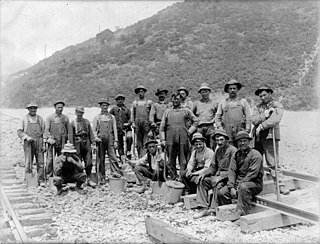
The Liberal Party was a political party established in the latter half of the 1800s in Utah Territory before the national Democrats and Republicans established themselves in Utah in the early 1890s.

Milo Andrus was one of earliest leaders in the Church of Jesus Christ of Latter-day Saints.
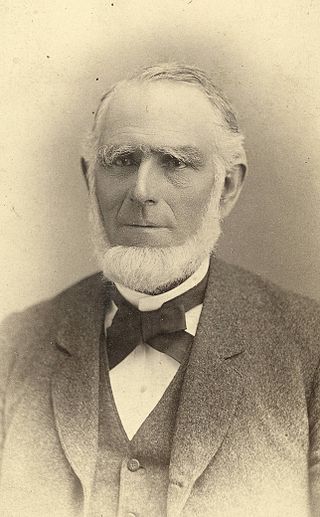
Abraham Owen Smoot was an American pioneer, businessman, religious leader, and politician. He spent his early life in the Southern United States and was one of seven children. After being baptized a member of the Church of Christ, predecessor to the Church of Jesus Christ of Latter-day Saints, Smoot served as a missionary in Kentucky, Tennessee, South Carolina, and England. He received no formal education, but learned to read as a child and later attended the School of the Prophets in Kirtland, Ohio. Like other early members of the LDS Church, Smoot practiced plural marriage, eventually marrying six women and having 24 children. After migrating west to Utah Territory, he was elected as the second mayor of Salt Lake City and maintained this position from 1857 to 1866. He was then assigned by Brigham Young to move to Provo, where he served as stake president and mayor from 1868 to 1881. He assisted financially in the construction of the Provo Tabernacle—today the Provo City Center Temple—as well as that of the Utah Southern Railroad. Smoot was the first president of the board of trustees of Brigham Young Academy (BYA)—which later developed into Brigham Young University (BYU). He was an early financial supporter of the institution and was nicknamed the "foster father" of the academy. His goal was to make education available to young Latter-day Saints. Today, the Smoot Administration Building at BYU is named after him.

Martha Maria "Mattie" Hughes Cannon was a Utah State Senator, physician, Utah women's rights advocate, suffragist, polygamous wife, and a Welsh-born immigrant to the United States. Her family immigrated to the United States as converts to the Church of Jesus Christ of Latter-day Saints and traveled West to settle in Utah territory with other Saints. She started working at the age of fourteen. At sixteen she enrolled in the University of Deseret, now called the University of Utah, receiving a Bachelors in Chemistry. From there she attended the University of Michigan and received her MD. She became the fourth of six wives in a polygamous marriage to Angus M. Cannon, a prominent Latter-day Saint leader during the anti-polygamy crusade. Cannon exiled herself to Europe so she wouldn't have to testify against her husband and others. Upon returning to Utah, Cannon worked as a doctor and fought for women's rights. She helped put women enfranchisement into Utah's constitution when it was granted statehood in 1896. On November 3, 1896 Cannon became the first female State Senator elected in the United States, defeating her own husband, who was also on the ballot. Martha Hughes Cannon was the author of Utah sanitation laws and was a founder and member of Utah's first State Board of Health.

Angus Munn Cannon was an early Latter Day Saint leader and Mormon pioneer.
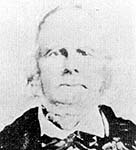
Zera Pulsipher was a First Seven Presidents of the Seventy of the Church of Jesus Christ of Latter-day Saints. In that capacity, he provided leadership to the early Mormon community, most notably in the exodus of a large group of Saints from Kirtland, Ohio. He was also an active missionary who baptized Wilford Woodruff into the LDS Church.

The Short Creek raid was an Arizona Department of Public Safety and Arizona National Guard action against Mormon fundamentalists that took place on the morning of July 26, 1953, at Short Creek, Arizona. The Short Creek raid was the largest mass arrest of polygamists in American history. At the time, it was described as "the largest mass arrest of men and women in modern American history."
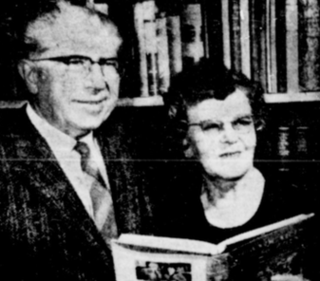
LeRoy Reuben Hafen was a historian of the American West and a Latter-day Saint. For many years he was a professor of history at Brigham Young University (BYU).
Thomas Grover was an early leader in the Church of Jesus Christ of Latter-day Saints. He was a polygamist, a Utah politician, and a Mormon pioneer.
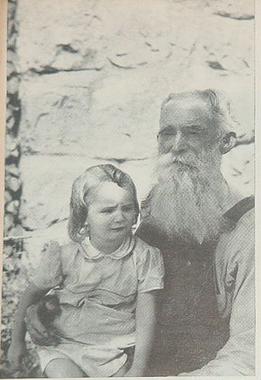
Joseph Smith Jessop was an early patriarch in the Mormon fundamentalist movement and, with John Y. Barlow, co-founder of Short Creek, Arizona, home to the polygynous Short Creek Community.

Mormonism: A Historical Encyclopedia is an encyclopedia designed for a general readership about topics relating to the History of The Church of Jesus Christ of Latter-day Saints, edited by W. Paul Reeve and Ardis E. Parshall. Reeve is a professor of history at the University of Utah and Parshall is an independent historian, newspaper columnist, and freelance researcher. Most of the encyclopedia's articles were written by historical researchers expert in the specific area covered, while the tone employed is one of objectiveness, yet respect for the beliefs of Mormonism and its culture. It is published by ABC-CLIO, a Santa Barbara, California-based publisher of reference works, as well as of the history journal, Journal of the West.
Marianne Monson (1975) is an American author of women's history and children's books; and a teacher. She is the founder of a literary nonprofit, The Writer's Guild.

Priddy Meeks was an American frontier doctor who practiced Thomsonian medicine. He was a polygamist member of the Church of Jesus Christ of Latter-day Saints and helped settle areas in Utah as a Mormon pioneer. Meeks was the first doctor in Southern Utah. He occasionally appears as a character in Mormon literature, such as the short story "They Did Go Forth" by Maurine Whipple.
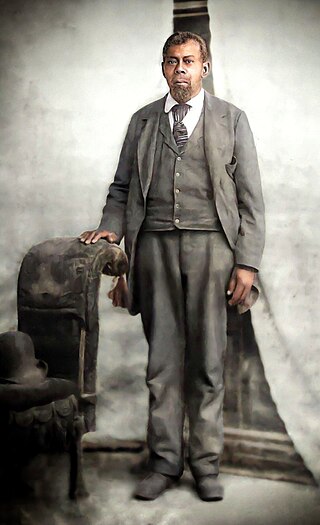
Green Flake was an early African-American member of the Church of Jesus Christ of Latter Day Saints, and was one of the three enslaved African-American Latter-day Saint pioneers who entered the Salt Lake Valley on July 22, 1847. He was born into bondage on a plantation in Anson County, North Carolina. His enslaver, James Flake, took him to Mississippi in the early 1840s. There, James, his wife, and Green joined the Church of Jesus Christ of Latter Day Saints in 1844. The Flakes moved to Nauvoo, Illinois, in 1845. Green Flake received his freedom sometime in the early 1850s and married Martha Morris. Green and Martha had two children together.
Anne B. Wilde is an American author and advocate on behalf of fundamentalist Mormon polygamists. She is a co-founder of Principle Voices, a group whose purpose is to counter anti-polygamy messages, build bridges between fundamentalist Mormon groups and outside communities, and for the decriminalization of polygamy.
Joshua Hughes Paul was a Mormon university president, newspaper editor and Latter-Day Saints missionary. Born in Salt Lake City, Utah, to Mormon pioneer James Patten Paul and Elizabeth Evans, the stepfather and mother of Martha Hughes Cannon, JH Paul as a boy herded cows for Mormon President Brigham Young. After learning carpentry from his father, he worked at the Salt Lake Brewery before entering the Latter-day Saints University in the same city, but, as no degrees were awarded at the former at that time, he had to continue his studies at Illinois Wesleyan University, where he graduated in 1905.
Since the beginning of political activity in Utah, Women were highly involved in their local political system. This is evident in the very fact that the Utah Constitution granted women the right to vote—20 years before the 19th Amendment was passed nationally. Despite high levels of female participation in politics and government, the issue of women's suffrage saw both support by Utah women and opposition by many other Utah women.














